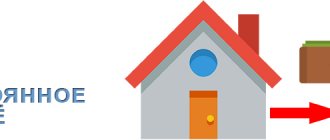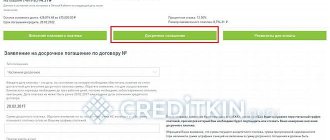Home / Restructuring / Features of the AHML restructuring procedure
The financial crisis in the country has added problems to those citizens who managed to obtain mortgage loans. Job loss, lower wages - all this contributed to the growth of borrowers' debt obligations to banks. Is there a chance to correct this situation?
A process such as the restructuring of mortgage debt with the help of state programs will not only allow you not to lose your home, but also regulate the financial situation of the borrower. Who is eligible for this program? What documents are needed for the procedure? We will talk about all this in this article.
Conditions of the state program of assistance to borrowers in AHML (DOM.RF)
Three years ago, AHML was renamed DOM.RF and developed a state support program for mortgage borrowers.
According to the Government Decree, there are several debt restructuring programs:
- Reducing the mortgage amount by 20 or 30 percent.
- Compensation of part of the principal debt (repayment of 50% (for each month) of the debt within 18 months).
- Converting a foreign currency mortgage into a ruble one, with the annual rate not exceeding 11.5%.
- Extension of the mortgage term (with a reduction in the monthly payment).
DOM.RF does not refund interest paid; you can only partially repay the debt. Moreover, if your rate on a previously received mortgage is above 12%, you can write an application for state support and reduce it.
Also read: Mortgages with state support at VTB: conditions and rates, documents and reviews
Loan programs
Bank House of the Russian Federation provides borrowers with the following mortgage programs:
- Secured by an apartment. It is allowed to purchase real estate from both the primary and secondary markets. The rate starts from 9.1%. For salary clients, the rate is reduced by 0.4%, if they have a 2-NDFL certificate or from a pension fund - by 0.4%. The mortgage amount ranges from 500,000 to 15,000,000 rubles, the term is 30 years. A loan without a down payment is possible. Russian citizenship and permanent registration are required.
- New building. This is an even better offer. The rate starts from 7.8%. Participants in the salary project are provided with a rate of 0.4% less. Mortgage amount - from 500,000 to 30,000,000 rubles, term - up to 30 years. Under this program, only apartments in new buildings are eligible for transactions.
- Mortgage for medical workers in the amount of up to 30,000,000 rubles at a rate of 7.6%. The down payment is from 10%, the program is designed for the purchase of housing in new buildings. The maximum amount can only be received by residents of the capital and the region, as well as St. Petersburg and the region. In all other regions, 15,000,000 rubles are issued under this program. Healthcare workers under this offer receive a 0.6% discount from the base rate.
- Ready housing. You can purchase apartments from the secondary market. The rate starts from 8.4%, the term is up to 30 years, the amount is up to 15,000,000 rubles. You can lower the rate by providing a 2-NDFL certificate (-0.4%), providing an extract from the pension fund (-0.4%). If the client makes a down payment of 10% or more, he has the right not to provide either a work book or a certificate of income.
- Ready housing. The offer allows you to choose an apartment from the entire variety of the secondary real estate market. The base rate is 8.4%. If you make a down payment of 30% or more, you can qualify for a rate of 8%.
- Family mortgage. It is used to purchase apartments in new buildings and country houses. This is a preferential program to help families where a second or third child was born between 01/01/2018 and 12/31/2022. The interest rate really compares favorably with rates on other programs - from 4.7%, amount - from 500,000 to 6,000,000 rubles.
- House. The rate starts from 9.6%, the amount is up to 15,000,000 rubles, a fairly large down payment is from 40%. You can buy not only private residential buildings, but also apartments from the primary and secondary markets.
- Construction of a residential building. The amount is up to 10,000,000 rubles, the rate is from 8.6%, the down payment is from 20%.
- Far Eastern mortgage. This is also a preferential offer created with the support of the state for the development of the Far Eastern region. A record low rate is offered - from 1.2% for an amount up to 6,000,000 rubles. Term - up to 20 years, down payment - from 15%. You can buy apartments from the primary or secondary market, as well as country houses.
- Military mortgage. This is another preferential program, the rate starts from 7.3%, the first payment is from 15%. The difference with this program is that the first contribution and all subsequent payments are made by the state. This will be provided that the citizen has been participating in the savings mortgage system for at least 3 years.
Who is entitled to state aid?
Help is provided only to families who find themselves in difficult life situations. These, based on the Resolution, include:
- families with one or more children, including adopted children;
- combat veterans;
- guardians of disabled people or disabled children;
- parents who are dependent on full-time students under 24 years of age.
But these categories of the population cannot always count on a positive answer, since there are other reasons for payment.
At least two conditions must be met:
- The property must be located on the territory of the Russian Federation, and the borrower and joint borrowers must be citizens of Russia.
- The total family income decreased by 30% compared to the period when the loan was issued.
- The monthly payment amount increased by 30% compared to the mortgage period.
- After paying off the mortgage, the remaining amount, when recalculated for each family member, is below the subsistence level.
Lending in the housing sector
The popularity of home lending in our country is just beginning to increase. Just 20-25 years ago, people knew little about mortgages. Accordingly, legislation in this area is still imperfect and has many gaps. The construction and mortgage lending industry itself currently has a number of disadvantages :
- Monopolization of the housing market by large construction companies: due to bureaucratic delays, it is simply impossible for small firms to compete with large developers;
- Gray salary: many citizens who want to take out a mortgage do not have the opportunity to confirm their income, since part of their earnings is not official;
- A large list of necessary documents to obtain a mortgage loan: few people have the opportunity to collect the entire list of documents (guarantee, certificate of official income, collateral, etc.);
- Housing shortage. This problem is especially acute in big cities: there is simply not enough housing, which results in an artificial increase in apartment prices and the inaccessibility of mortgages for people with average earnings.
All these disadvantages really exist, but people only learn about them when they themselves try to get a mortgage loan. The media rarely covers this topic. The state has also moved far from the media; the main problem is the reluctance of the authorities to support mortgage borrowers. Loan restructuring is carried out mainly at the initiative of creditors; government programs to support housing lending can be counted on one hand.
Incurring debt - consequences
Anyone can fall behind on their mortgage payments; the unstable financial situation in the country contributes to this. Some people lose their jobs, others have their wages reduced. There are other reasons why borrowers cannot pay their bills on time: the birth of a child, illness, etc. Mortgage debt arises after the first month of late payment.
Penalties and fines for late repayment of the mortgage are accrued from the first day of late payments. Detailed conditions for calculating penalties are specified in the loan agreement.
In addition to the penalty, for late payment the borrower may face:
- Seizure of property;
- Litigation with a creditor;
- Putting mortgaged housing up for auction in order to pay off the debt;
- Transfer of the right to claim a loan to third parties (most often debts that are less than 500,000 rubles are transferred).
You may find the following information interesting: what to do if the bank sues for non-payment of a loan?
Collateral requirements
Basic requirements for mortgaged real estate:
- The area of the premises should not exceed the established limit; for a one-room apartment it is 45 square meters. m., for a two-room apartment – 65 sq. m., for apartments with 3 or more rooms – 85 sq. m.
- Cost of 1 sq. m of total area does not exceed by more than 60% the average cost of real estate in the region.
- You do not own any other housing (except for a mortgage), or your share in the common shared ownership does not exceed 50%.
Other ways to improve your financial situation
If you find yourself in a completely hopeless situation, there is no money to pay the mortgage, when it will appear is unknown (prolonged illness, lack of work, etc.), you can try to solve the problem in a different way. There is an option: contact the bank and ask for permission to sell mortgaged housing . Buy a cheaper apartment for yourself and transfer the difference to pay off the loan.
If this option does not suit you, you can try to solve the issue in a less radical, but more complex and lengthy way: rent out the mortgaged apartment. To do this, you also need to visit a bank branch, get permission to rent out housing, rent a cheaper apartment for yourself, and also use the difference in price to pay off the debt.
Mortgage loan requirements
As part of the state support program, only targeted loans issued for the purchase of housing are subject to restructuring. At the time of contacting the bank, the contract must be valid for at least 1 year.
You can ask for help even if you have previously refinanced a home loan. If you meet the program requirements, you can submit documents no earlier than one year after refinancing.
When is loan restructuring necessary?
If you want to maintain the status of a respectable borrower and good relations with the bank, then you should submit an application for loan restructuring as soon as your financial situation is shaken. And when you have strong arguments at your disposal to convince the bank of the need for this step.
You should think about loan restructuring if:
- Your income level has decreased. That is, you cannot contribute funds to repay the loan in the amount established by the agreement.
- You have temporarily, partially or completely lost your ability to work. Options: long sick leave, disability, injury.
- Your expenses have increased. We are talking about the birth, adoption of children, increasing the number of dependents.
- You have lost your main source of income. Retrenchment or loss of work due to the liquidation of the employing organization, closure of one’s own individual entrepreneur – there can also be many reasons.
If you know that you will no longer be able to make the next loan payment, then immediately go to the bank to discuss restructuring options with credit managers. The sooner you do this, the less likely it is that late payments and negative entries will appear in your credit history.
Let us help you write off your debts
Our lawyer will call you in a few minutes and answer all your questions
Documents for mortgage restructuring
You must prepare a package of documents and contact the bank where you took out the mortgage, that is, communication between the agency and you is carried out through the bank.
You will need:
- copies of passports of all participants in the mortgage agreement: the main borrower, co-borrowers, guarantors, mortgagors;
- a certificate confirming the right to state support (documents of all family members, including confirmation of social status, for example, a disabled person);
- certificate from the Unified State Register of Real Estate about real estate owned.
This is not a final list of documents, as the bank may request additional ones to make a decision. The bank will give you an application form that you need to fill out according to a sample (available on the banks’ websites or you will be given a paper sample at the branch).
What is loan restructuring?
Loan debt restructuring is the process of revising the payment schedule under a loan agreement. Its main goal is to temporarily or permanently reduce the loan burden, eliminating the possibility of delays or non-payment of the loan. Debt restructuring comes in several forms:
- Banking restructuring.
It is entered by mutual agreement of the parties: the bank and the borrower. One of its forms was mortgage holidays, which at the legislative level guarantee citizens the right to improve mortgage payment conditions. - Judicial restructuring.
It is quite difficult for the borrower to achieve it - he needs to reasonably prove to the court that the provisions of the old loan payment schedule are illegal. For example, the interest rate exceeds the maximum established by the Central Bank for a specific type of loan product. - Debt restructuring in bankruptcy.
It provides for the repayment of debt to all creditors simultaneously, but is applied only within the framework of judicial proceedings to declare an individual bankrupt.
In other words, this is a last resort option used if the bank does not agree to change the schedule, but the borrower is not able to pay the loan
.
Bank debt restructuring on a loan (this is what we will consider today) is an additional agreement to the main loan agreement and is drawn up only at the bank that issued the loan - this is its fundamental difference from loan refinancing.
To obtain it, you need strong arguments that can convince the bank to revise the payment schedule. In other words, the credit institution must be given a choice: either easing the terms of the loan, or the occurrence of delays, and in the long term - declaring bankruptcy. We will consider further what new conditions for loan repayments the bank can offer.
How to get support from the state
Questions related to government assistance arise quite often. Detailed answers can be found on the official website of DOM.RF, and you can also find out by calling the hotline 8-800-755-55-00.
To arrange a restructuring, contact the bank branch where you received your mortgage. Fill out the application and give the documents to the employee. You will receive a response within 1-2 weeks. If it is positive, you must sign an agreement and receive an updated payment schedule.
Also read: Mortgage restructuring at VTB for individuals: conditions, application and reviews
What to do after receiving a refusal - three options
But what to do with the refusal itself? Who should I contact? There are several ways to resolve the unresolved issue of mortgage restructuring after a refusal has been received from the bank. Several different cases are discussed in detail below, which depend on the actions of the credit institution and the individual who took out the mortgage.
The bank filed a lawsuit due to late payments. There are cases when the bank refused to restructure, the client was unable to repay the loan, and therefore the credit institution went to court. In such cases, a summons is issued requiring you to appear at a court hearing. And the first thing that is necessary is not to be afraid and in no case ignore it. You need to collect all the necessary documentation and go to a court hearing to request a reduction in fines for late payments.
Court proceedings in some cases helped borrowers get rid of additional fines. But, again, you need to remember that each case is unique, and in none of them there is a guarantee of winning litigation with the bank.
If the matter does not go to court, then all disagreements with the bank can be resolved through a refinancing program. This program involves issuing a new loan to repay the old one. In other words, obtaining a loan from one bank to pay off an old obligation in another. But in order to receive money from another bank, you need a good credit history, which does not happen in all cases. Moreover, many banks are just as disapproving of refinancing as they are of restructuring a mortgage loan.
Recommended article: Buying a new building with a military mortgage
Extension of the loan agreement. This method makes it possible to remove part of the financial burden of the debtor. Prolongation consists of reducing the size of payments as opposed to increasing the loan terms. But this should not be confused with restructuring - they are not the same thing. Fortunately for borrowers, banks in most cases approve the extension, even if the restructuring was refused.
Feedback on restructuring in AHML (DOM.RF)
Valentina Alexandrovna:
“When we learned about the possibility of mortgage restructuring, we immediately contacted DOM.RF. Collecting documents took a little time; during the entire period of document preparation, the manager advised us. Overall, the impression is positive.”
Ekaterina Solntseva:
Alexey Vladimirovich:
“We contacted DOM.RF directly, the former AHML, to refinance our mortgage. Initially the rate was 13%, it was very difficult to pay, but after submitting the application it was reduced to 9%. Thanks to the staff for their professionalism and good attitude.”
Ilmira Odinochenko:
Step-by-step instruction
The list of required documents will depend on the chosen restructuring method. Since AHML cooperates with credit institutions, you don’t have to contact them directly; the bank will do everything for you. So, in order to carry out the restructuring procedure, you need to adhere to the following algorithm of actions (given with amendments depending on the program):
- First, you need to call the bank and find out where exactly you should go for advice and what documents you will need to take with you.
- After consultation with bank specialists, a list of necessary documents is issued (if refinancing takes place under the state support program, some documents will have to be ordered from the MFC).
- All collected papers must be taken to the lender's office.
- Next, the bank sends the documents for consideration to AHML or reviews them independently at a meeting of a special commission.
- After the decision is made, the borrower is called and informed of the results.
- If the decision is positive, the client is again invited to the office to sign an additional document. agreements with new loan payment terms.
What documents are required?
If the mortgage restructuring takes place at a bank, the list of documents for filing an application will be very small:
- Applicant's passport.
- Loan agreement.
- Certificates of salary and family composition.
- Certificate from the Unified State Register stating that the housing is the only one.
This is the main list of papers. If debt restructuring is carried out under a state support program, then AHML may need additional information : about the collateral property, about the loan balance.
The above is only a sample list of documents. The bank requests the necessary information on an individual basis, so the exact list must be clarified with the employees of the credit institution.
If the reason for the decrease in income is the illness or death of the borrower, you will also need to provide relevant certificates. In any case, the client knows in advance on what basis he will ask to restructure the loan, so certificates proving insolvency should be prepared in advance.
Submission and consideration of an application
You can submit documents to a bank branch by mail, but it is better to do it in person. Then an employee of the credit institution will be able to check the package for the presence of all the necessary papers, look at the application form for errors and give you the number of the incoming application.
If you are interested in writing an application for mortgage restructuring, we recommend that you familiarize yourself with this material.
The application is considered by the bank at a meeting of a special commission . There, a council of specialists decides whether the borrower has grounds for restructuring and what conditions they can offer the client (based on his income). If the debtor meets the conditions of the state support program, then the package of documents is sent to the AHML department, and the decision on approval (or refusal) is made by specialists from this department.
Deadlines
The period for consideration of the application established by law should not exceed 30 days . However, sometimes additional information may be needed to make a decision, then this period is extended for another month (the applicant is warned about this in advance). In practice, such customer requests are considered for no more than 10 days, after which the borrower is notified of the result.
Signing the agreement
If the bank or AHML makes a positive decision on the application, the client is invited to sign a new agreement under the contract. It must specify the rights and obligations of the parties. Most often, the agreement states that the debtor is obliged to make payments on time, and the bank has the right to terminate the agreement unilaterally if the loan is overdue.
In the event that a debtor defaults on payment under new, more favorable contract terms, his credit history automatically deteriorates. The bank loses confidence in such a client and no longer meets them halfway.
When restructuring a mortgage, it should be remembered that this is only a temporary measure that allows the borrower to restore his financial position without spoiling the CI. After the debtor has a stable income, the bank has the right to return to the previous terms of the agreement.
General information about concluding a debt restructuring agreement is described in this article.











